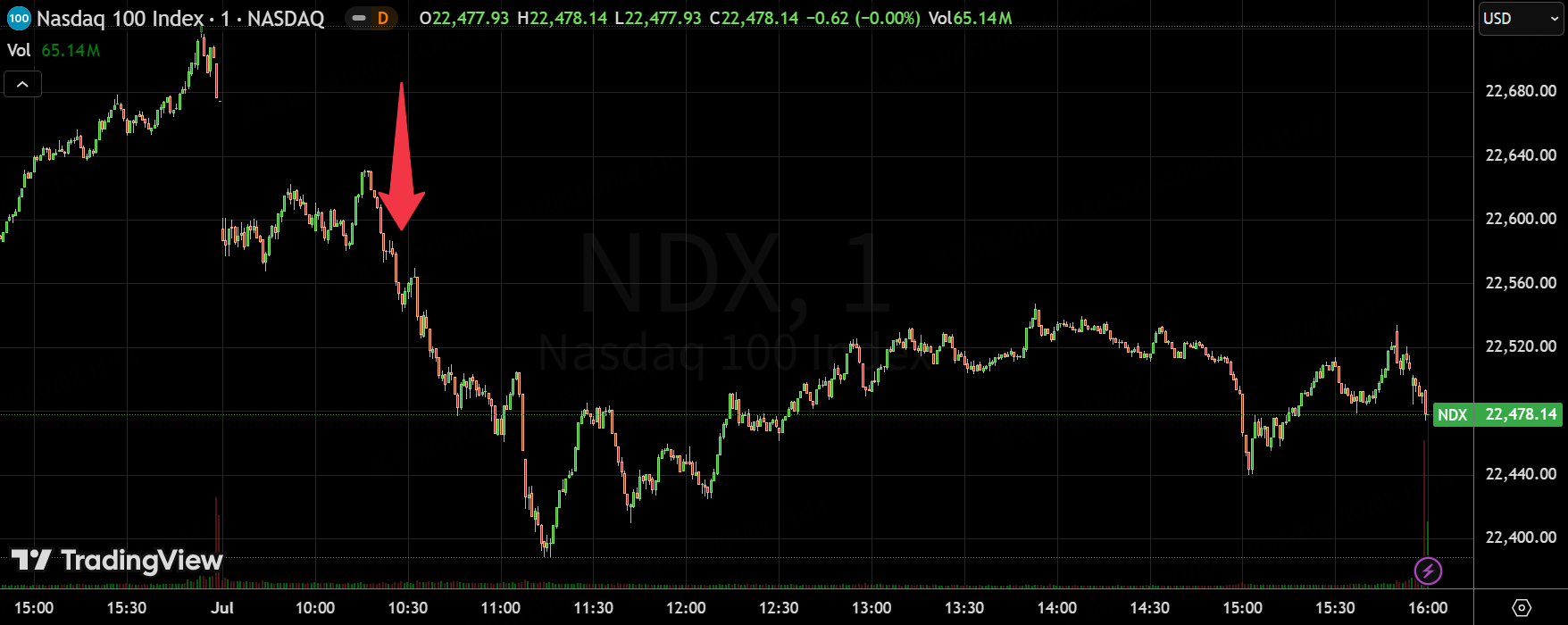On the first trading day of the second half of the year, an hour and a half after the opening bell (around 10:30), a number of leading U.S. stocks ( $NVIDIA(NVDA)$ , $Broadcom(AVGO)$ , $Netflix(NFLX)$ , $Meta Platforms, Inc.(META)$ , etc.) collectively fell sharply, driving $NASDAQ 100(NDX)$ back to trigger widespread market concern.
The immediate cause was a momentum pullback (momentum unwind)
Institutions focused on selling previously outperforming momentum stocks (e.g., AI, arithmetic related) at the beginning of the second half of the year, leading to short-term liquidity constraints.

This pullback is the most dramatic since the January "DeepSeek moment" momentum trading pullback, of course, the decline is not AI / arithmetic fundamentals deterioration, nor systemic risk, more short-term trading behavior driven, mainly including:
Technical selling:
High concentration of positions: Momentum strategies are at a 1-year 99% split (extreme high), with high leverage (93% split) adding to the selling pressure.
Early Quarter Positioning: Institutions may be adjusting positions due to "window dressing", selling momentum stocks such as AI and semiconductors that have risen too much in the previous period.
Sector rotation driven:
Laggards rally: low performers in momentum strategiesrallied short-term while winners (e.g. AI sector) sold off.
Market sentiment switch: funds flowed from highly valued growth stocks to defensive assets despite a seemingly favorable macro environment (oil <$80, weaker dollar, rate cut expectations)
What is a Momentum Unwind?
An investor closes or unwinds his position in a momentum strategy, resulting in a reversal of the market trend or an increase in volatility.
Momentum strategies are very much understood as "chasing the bulls", i.e. buying assets that have performed well in the past and selling those that have underperformed ("the strong are always strong and the weak are always weak").As a result, momentum retracements can be triggered when market conditions change, risk increases or investors choose to lock in profits.
The sustainability of a momentum retracement depends on
Changes in market trends: If the market trend is indeed reversing (e.g. from a bull market to a bear market), the momentum retracement may continue for some time until a new market trend is established.
Investor behavior: If only a small number of investors close their positions and there is no material change in the market trend, the momentum retracement may only be a temporary adjustment
The following signals also need to be monitored
Position levels: If momentum positions remain at historically high levels, this could trigger a chain sell-off.
Macro data: non-farm payrolls, Fed policy moves may change the market's expectations for a "soft landing".
Sector rotation: If defensive sectors (e.g. utilities) continue to outperform momentum stocks, the trend is likely to continue.
Hedging Strategy
Short term: avoid highly leveraged momentum portfolios or manage risk using hedging instruments (e.g., using put spread optionsthat can hedge individual stocks or indices), while keeping an eye on this week's employment data.
Medium to long term: watch to see if the AI productivity narrative is disproven and if money returns to growth stocks


Comments